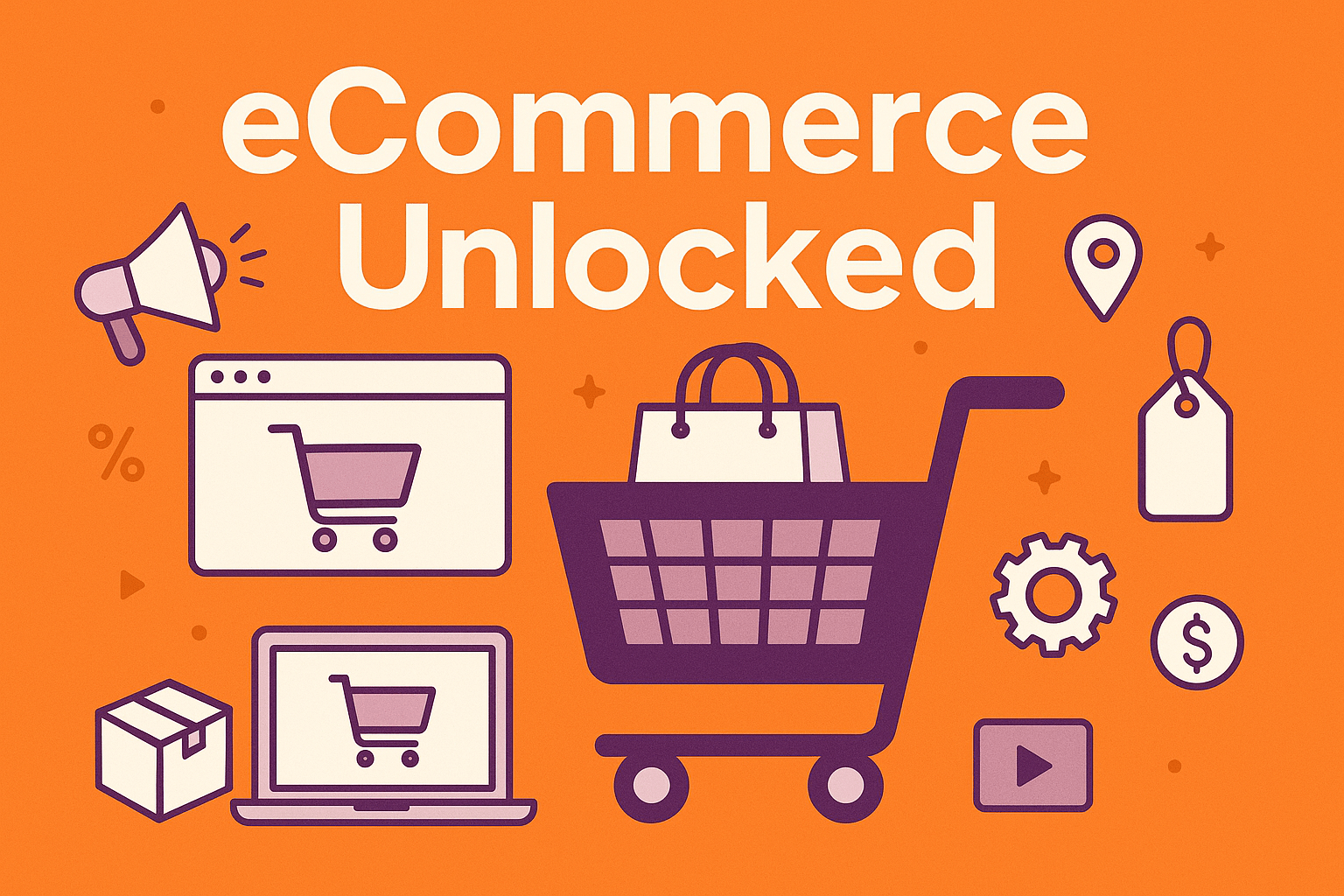Global e-commerce sales reached well past $6.3 trillion in 2024, establishing that the e-selling market has become far larger than the current accounts of the Japanese GDP. From those days when it started as an elective experiment in the early 1990s, it has now set the stage for retail innovation worldwide. From garage startups to the billion-dollar brands, e-commerce has proven time and again to be more than just a digital store-wagon is truly a movement, a mindset, and a survival strategy in the interlinked world.
In this guide, we’ll discuss what powers eCommerce and how you can use it, with a view towards what lies ahead. Whether you’re starting your first online store or scaling an enterprise, this article will provide you with the tools and insights to keep you ahead.
Why eCommerce is Important
It is the biggest change in the retail trade in the last century, and hence increasingly becoming an opportunity, rather than going extinct. According to Statista, 24% of retail sales were conducted online in 2024, and projections stand at 30% in 2027.
Reasons Why It Is More Important Than Ever Now:
- Global Reach: Sell to anyone, anywhere, anytime.
- Lower Overhead: No physical storefront means fewer costs and greater margins.
- Consumer Expectations: Customers today want convenience, selection, and smooth checkout processes online.
- Business Continuity: The emergence of e-commerce became a life-saving element for many businesses during crises such as the pandemic.
Key Benefits of Running an eCommerce Business
1. Scalability
Start small, test the product, then scale fast with platforms as Shopify, BigCommerce, or WooCommerce.
2. Data-Based Decisions
Track user behavior, sales trends, and marketing ROI using Google Analytics, Hotjar, and Klaviyo.
3. Open 24/7
In contrast to brick-and-mortar stores, your online store never sleeps, allowing passive sales to flow in at any time of day.
4. Personalized Marketing
Use CRMs and automation platforms to segment your audience. Examples include Mailchimp, HubSpot, or Drip to push on conversion.
A Stepwise Guide for Opening an Online Store
Step 1: Pick Your Niche
Don’t try to sell to the whole world. Search for product categories where there is high demand with low saturation or very unique differentiation. Conduct some market research using tools like Google Trends and Jungle Scout.
Step 2: Selecting the Right Platform
Setting up the store involves selecting:
- Shopify – user-friendly and scales well
- WooCommerce – highly customizable if you are a WordPress user
- Magento – best suited to the enterprise needs
Step 3: Setting up the Frontend
- Pick a responsive design theme
- Work on neat product descriptions
- Places images and videos of product quality
- Meet gateways’ payment requirements (Stripe, PayPal, Apple Pay)
Step 4: Increasing Traffic
Put to use:
- SEO, to find visibility
- Social media Ads for Outreach (Meta, TikTok)
- Email marketing for nurturing leads and repeat purchases
Step 5: Optimization and Scaling
- Use A/B testing to improve conversion rates
- Retarget visitors who have not made a purchase
- Expand into digital marketplaces like Amazon, Etsy, or Walmart
Real-World Example: Gymshark eCommerce Success
From a garage in the United Kingdom in 2012, Gymshark grew into a billion-dollar muscle fitness apparel facility without a single retail outlet. By leveraging influencer marketing, massive social media presence, and Shopify infrastructure, Gymshark built a loyal community and sold all over the world in a clear demonstration of the power of a digital-first strategy.
Actionable Tips for eCommerce Success
- Take care of UX: Let the site load really fast, be mobile-optimized, and allow easy navigation.
- Simplify Checkout: In order to stop potential customers’ abandonment, offer guest checkout, provide various payment options, and show shipping costs upfront.
- Social Proof Is Key: Incorporate reviews, user-generated content, and trust badges to turn visitors into prospects.
- Automation: Saves time and eliminates human errors from sending cart abandonment emails to updating inventory.
Mistakes to Avoid
- Without Market Research: Launching without firsthand knowledge of demand or competition is to invite failure.
- Disregard Mobile Optimization: More than 60% of eCommerce traffic comes from mobile—don’t be one to lose these users because of a bad experience.
- Too Much Tech Stack: Use only essential tools and platforms until growth warrants expansion.
- Snubbing Customer Support: Quick and helpful customer support will engender loyalty towards your brand and reduce the percentage of returns.
Future Trends in eCommerce: What to Watch Next
1. Personalization Using Artificial Intelligence
From suggesting products to assisting with chat services, AI has changed the face of shopping for consumers and the marketing techniques for merchants.
2. Voice Commerce
Alexa and Google Home-type devices are becoming sales channels, and voice search optimization is now big!
3. AR/VR Shopping
AR allows try-before-you-buy experiences with clothing, furniture, vanity, etc. IKEA, Warby Parker, and L’Oréal, among others, take center stage.
4. Sustainability Etiquettes
The modern consumer demands transparency, sustainable materials, and fair trade. Brands that lead in this will manage to shine brighter.
5. One-Click Checkout and Headless Commerce
It is all about speed. Advanced frameworks and tech integrations to help reduce friction in the buying process will be the new standard.
Conclusion: Keep Up with the Edicts of the eCommerce Revolution
eCommerce is not just an outlet to do business; it is the future of commerce itself. If done right, even the smallest entrepreneur can compete with giants globally, build an enduring brand, and open up endless growth opportunities.
To get your eCommerce journey started or scaled, the basics are: platform selection, product validation, and development that considers the end consumer. For in-depth tutorials, case studies, and toolkits, subscribe to our eCommerce insights newsletter; yours might just be the next success story.




